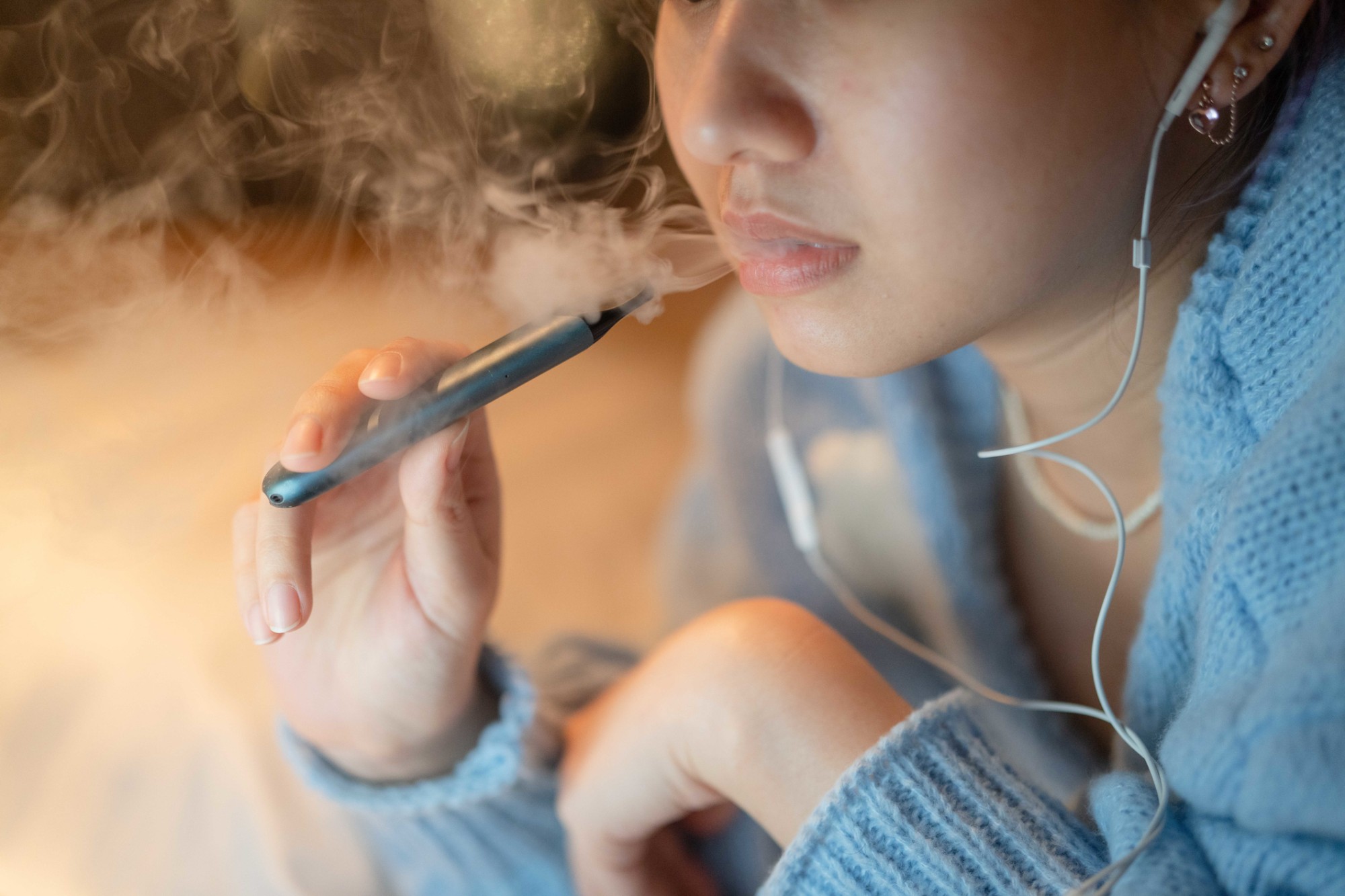More than 40,000 youth used nicotine pouches last year alone, a staggering increase from 2021. The relatively new and less detectable product’s increasing prevalence among youth underscores an urgent need for informed discussion and intervention regarding adolescent substance use more broadly. Data shows that 59 percent of people 12 or older used tobacco, vaped nicotine, alcohol or illicit drugs in 2023, despite proof that substance use during these formative years poses a severe threat to cognitive function.
“Early drug use can impair neurocognitive development and increase youth vulnerability to later use of illicit substances, and even academic failure,” shares John Allegrante, the Charles Irwin Lambert Professor of Health Behavior and Education at Teachers College, who examines the topic in his latest research with an international group of Nordic investigators. “With each generation, the messaging and campaigns around these dangerous products change to target those most vulnerable: our youth. We [educators] need to work with parents to provide more support resources and surveillance during such critical years.”
We spoke with Allegrante and other TC experts about the risks and ways educators, parents and communities can address these challenges together.
A Call to Action: Reimagining Awareness, Prevention, and Intervention

(Photo: iStock)
While interventions like the “Just Say No” campaign and the D.A.R.E. programs of the ’80s and ’90s have proven to be unsuccessful, the desire for more effective and youth-informed approaches to preventing substance use among youth in the U.S. continues to grow.
Influencer marketing and social media promotions for e-cigarettes have increased the risk of youth vaping. Studies show that social media platforms often glamorize e-cigarettes with trendy flavors like cotton candy, attracting young users. TC’s Ayorkor Gaba, Assistant Professor of Counseling & Clinical Psychology, notes that there is a rise in innovative approaches, like media literacy education, to help youth critically analyze media and reject harmful messages.
She explains that social media can also share science-based health messages, enhancing prevention and treatment of substance use. For example, influencers frequently share their lived experience with overdose, the harmful effects of vaping, and recovery. Though “impactful,” the overall quality, accuracy and reliability of this content posted can be poor. "The lack of evidence-based content on social media reinforces the need for expert involvement (e.g., public health, psychology, etc.) in disseminating evidence-based content on social media," notes Gaba. "Due to the significant influence of social media on youth, experts and researchers should integrate youth perspectives in developing social media-based intervention and prevention that can reach millions of youth. "
The CDC notes that a high majority of adolescent substance use (81 percent) occurs during socialization with friends. “As teens, we’re all looking to fit in,” adds TC doctoral student Treasure Tannock. “Between ages 15-25, we seek to cling to anything that gives us a better understanding of self-identity. If we can use that same mindset better to reach young people about the dangers of use through a more holistic, relatable lens, we might be able to make progress.”

(Pictured left to right: John Allegrante, Charles Irwin Lambert Professor of Health Behavior and Education, Ayorkor Gaba, Assistant Professor, Counseling and Clinical Psychology and Treasure Tannock, doctoral student.)
To start, Tannock recommends getting youth involved in creative outlets that pique their interest, a concept she implemented during her clinical work at Rikers Island. “We asked individuals: Who are you now? Who do you want to be? What obstacles do you face with substance use? And how can you receive support?” explained Tannock, a Clinical Psychology student. “We then collaborated with music and art therapists to help express their stories. Over time, many became open to support and envisioned a new path forward.”
How Parents, Schools and Communities Can Help

(Photo: iStock)
Although there is much work to be done, parents, communities and educators can start by laying the groundwork for more proactive dialogue and means of support.
Allegrante explains that during the pandemic, increased supervision at home led to a decrease in adolescent substance use, an observation from his post-pandemic research. “As young people return to school and socialize more, we’re seeing a resurgence in use,” he explains. “Many prevention efforts start too late; by the time we address it, habits are ingrained. We must start these conversations in middle or even elementary school.”
With so much at stake, schools are tasked with a greater responsibility to address the crisis. A recent survey by the American Addiction Centers revealed that schools are the primary setting where youth receive informative substance use education. However, out of the 500 students surveyed, only 75 percent had a substance-use-focused curriculum in their health class.
“School is still a prime captive audience location for prevention, but it requires an interdisciplinary approach, resources and a theory-driven, evidence-based curriculum across the board,” Allegrante adds. “We need to work with communities, public health agencies and even local government officials to bridge the gap.”
Yet, prevention must extend beyond the classroom. It’s imperative for parents to stay informed about their children's habits, as research shows that parental involvement is key to mitigating peer pressure and promoting informed decision-making. “Parenting practices (e.g., monitoring, communication) have been linked to youth substance use, yet there are few accessible supports to help the busy parent develop skills in this area. Gaba recommends an app by the Substance Abuse Mental Health Services Administration called “Talk. They Hear You.,” specifically designed to help parents and caregivers turn everyday situations into opportunities to discuss alcohol and drugs with their children. “It gives them the skills, confidence, and knowledge to start and maintain these conversations as their kids grow.”
Gaba also highlights the need to address disparities, urging, "It's a matter of life and death." Between 2018 and 2022, drug overdose deaths among youth more than doubled, particularly impacting Latinx and Black communities. "Many still mistakenly believe opioids do not affect these groups, leading to decreased awareness and access to vital resources like Naloxone (Narcan), which can reverse overdoses," she notes. "Additionally, substance use is notably higher among lesbian, gay, and bisexual (LGB) youth compared to their non-LGB peers." To address these challenges, Gaba advocates for culturally tailored interventions that actively involve marginalized youth in the design process and target the social determinants of health that contribute to their elevated risks.
“Community support is also vital," notes Tannock. “Having safe, accessible community spaces like libraries or after-school programs can make a significant difference. It’s a team effort.” She urges parents to inquire about local prevention resources.
Although substance use among youth is an ongoing challenge, the National Institute on Drug Abuse (NIH) reports that adolescent substance use continues to fall below pre-pandemic levels, an encouraging statistic.
“If we look at how drastically cigarette smoking has declined as a consequence of culture change, especially in advanced economies of the world, it’s a testament to just how far we’ve come,” concludes Allegrante. “But it took a concerted effort over many years, and we can certainly chart a similar path forward with this next generation.”
